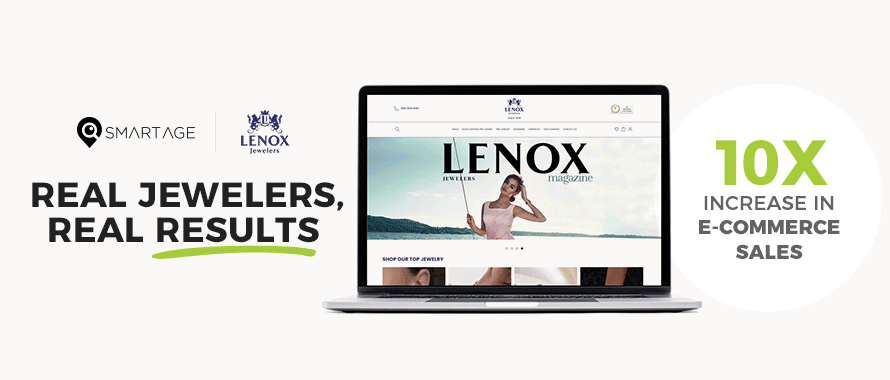Jewelry ECOMM Tech
How to Find the Right Influencers for Your Jewelry Brand February 25, 2019 (0 comments)

You’ve likely heard about the power of influencer marketing, and you may be wondering how your jewelry brand can benefit from influencers. However, you probably also feel intimidated by initiating the process, since you’re not quite sure what to expect or how to even approach an influencer. First and foremost, you must find the right influencers for your brand.
Before you can start the influencer research process, you must clearly define your goals, in the same way you would with any marketing tactic. Would you like an influencer to increase awareness of your brand? Would you like an influencer to help you sell a certain product? Would you like an influencer to help you get more social media followers? Would you like an influencer to help you shape and refine your brand identity? The possibilities are endless, but you must start by setting a concrete goal.
Next, you must educate yourself on the many types of influencers. For the purposes of this article, we’ll stick to two main categories of influencers: macroinfluencers and microinfluencers. Macroinfluencers are social media rockstars who have hundreds of thousands - or even millions - of followers, and they typically make a living from their image and the lifestyle they portray to their followers. These macroinfluencers will usually only partner with well-established brands, and they charge fees. More than likely, you won’t interact with your macroinfluencer directly, since that person is managed by an agency.
Microinfluencers, on the other hand, are much more accessible. These people often have a few hundred to a few thousand followers, and they’re passionate about social media - they’re not necessarily making a living from their social media presence. These microinfluencers have a smaller following, but the followers are likely very engaged. Sometimes, these microinfluencers will charge a fee for their influence, but other times they will post in exchange for product, discounts, or other incentives.
For the sake of budget and practicality, most brands beginning the influencer marketing journey will want to seek our microinfluencers. One downside of working with microinfluencers is that they can be more difficult to find, and you’ll have to put in some time and effort into seeking out and choosing the best-fit partners for your brand. They most likely won’t show up on pre-made “influencer” lists, since they haven’t earned a massive following.
You can start by revisiting your Customer Personas, which are profiles of your target customers that include things like demographics, shopping preferences, and habits. If you’ve created effective Customer Personas, then you should have a good idea of where your target customers spend most of their time. Are they on Instagram? Do they read blogs? Do they use Snapchat or other social media platforms? Where your customers spend their time will dictate where you look for influencers.
Let’s pretend that your target customer spends a lot of her time browsing Instagram, looking at fashion trends and admiring some of her favorite lifestyle bloggers. She lives in a small-to-medium-sized city, and she has disposable income. She likes to follow trends, but she’s not high maintenance. She enjoys travel and being “out and about” in the world.
When you do this exercise, you’ll want to put yourself in your target customers’ shoes. Which hashtags would she be surfing on Instagram? Some examples may include #lifestyleblog, #lifestyleblogger, #styleblog, and #styleblogger.
To view the results for these hashtags, you can open the Instagram app, click the search icon on the bottom of the screen, and then enter a hashtag like #lifestyleblogger. From there, you’ll be able to see all the activity for that hashtag. You’ll have the choice to sort results between “Top” (the macroinfluencers) and “Recent” (the results in chronological order). Sorting by “Recent” provides many options, some more interesting than others.
 I recommend scrolling through the feed and stopping to look at any photo you think is high quality and that you think may resonate with your target customer. Does the person in the photo look like someone who’d buy and wear your jewelry?
I recommend scrolling through the feed and stopping to look at any photo you think is high quality and that you think may resonate with your target customer. Does the person in the photo look like someone who’d buy and wear your jewelry?
 I was inspired to click on the photo in the second row from the top, all the way on the right, but you may be inspired to click on something else, depending on your jewelry brand and your target customer. I like this photo because it’s clear, and I get the sense that the woman in the photo is passionate about fashion. When I viewed the full photo, it looked like this:
I was inspired to click on the photo in the second row from the top, all the way on the right, but you may be inspired to click on something else, depending on your jewelry brand and your target customer. I like this photo because it’s clear, and I get the sense that the woman in the photo is passionate about fashion. When I viewed the full photo, it looked like this:

From the username, I could tell that she has a blog, so she must be passionate about sharing her style with her followers. I clicked on her profile for even more information, and I can see that she’s a travel and style blogger with a blog titled “Pretty All Around”. She may not have hundreds of thousands of followers, but she does have more than a thousand.
To dig deeper, I would view each one of her posts to get a better sense of her engagement. How many of those 1,293 followers are actually liking her posts? How many are commenting on them? These are all important observations to make when choosing a microinfluencer.

I would suggest maintaining a spreadsheet of potential influencers you find and then logging all of their information, including their location, their follower count, their contact information, and their full digital presence (Are they on other social media networks? Do they have an active blog?).
Over time, you’ll get better at pinpointing the influencers that work best for your brand. You’ll probably even start to find hashtags that are better suited for the customers you’d like to target. Once you feel confident that you’ve found some influencers who would be excellent brand ambassadors, you can start reaching out to them to see if they’d be interested in moving forward with a partnership.


